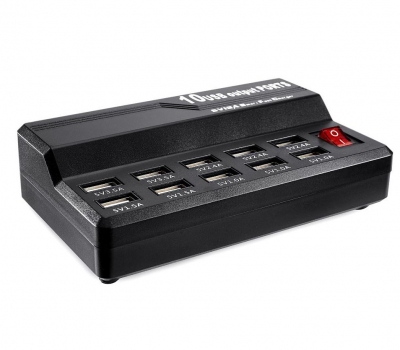Is Aluminum Magnetic?

Aluminum, a lightweight and versatile metal, is one of the most widely used materials in modern industries. Its applications range from construction and transportation to packaging and electronics. Given its extensive usage, understanding its physical properties, such as magnetism, is crucial. This article explores whether aluminum is magnetic, delving into the principles of magnetism, the specific properties of aluminum, and the conditions under which aluminum might interact with magnetic fields.
Understanding Magnetism
Basic Principles of Magnetism
Magnetism is a physical phenomenon produced by the motion of electric charge, which results in attractive and repulsive forces between objects. The most familiar form of magnetism is ferromagnetism, which occurs in materials such as iron, nickel, and cobalt. These materials can be permanently magnetized due to the alignment of their magnetic domains.
Magnetic materials are classified into different categories based on their magnetic properties:
- Ferromagnetic materials: These materials exhibit strong magnetic properties and can be permanently magnetized. Examples include iron, nickel, and cobalt.
- Paramagnetic materials: These materials are weakly attracted to magnetic fields and do not retain magnetization when the external field is removed. Examples include aluminum, platinum, and magnesium.
- Diamagnetic materials: These materials are repelled by magnetic fields and cannot be magnetized. Examples include copper, gold, and bismuth.
Magnetization and Magnetic Fields
Magnetization refers to the process by which a material becomes magnetic, either temporarily or permanently. This process is influenced by the material's atomic structure, particularly the arrangement of electrons in their orbitals. In ferromagnetic materials, the unpaired electrons in atoms create magnetic dipoles that can align to form a strong magnetic field.
Magnetic fields are generated by moving electric charges or by the intrinsic magnetic moments of elementary particles. The strength and direction of a magnetic field can influence the behavior of materials placed within it.
The Properties of Aluminum
Aluminum’s Atomic Structure
Aluminum is a chemical element with the symbol Al and atomic number 13. It belongs to the group of post-transition metals, characterized by a close-packed crystal structure and a relatively low density. Aluminum has an atomic weight of 26.9815 u, with a standard atomic configuration of [Ne] 3s² 3p¹.
The metallic bonding in aluminum is relatively weak compared to transition metals. This weakness is due to the electron configuration, where the single 3p electron contributes to a metallic bond that is less strong than those found in ferromagnetic materials. This electron configuration also contributes to the lack of unpaired electrons, which is crucial for strong magnetic behavior.
Physical and Chemical Properties
Aluminum is known for its light weight, high corrosion resistance, and good conductivity of electricity and heat. It has a density of approximately 2.70 g/cm³, about one-third that of steel, making it ideal for applications where weight is a concern.
Chemically, aluminum is highly reactive but forms a protective oxide layer (Al₂O₃) that prevents further corrosion. This oxide layer is one of the reasons why aluminum is widely used in construction and packaging, as it enhances the material's durability.
Aluminum's conductivity is about 60% that of copper, making it useful in electrical applications where weight and cost are factors. However, its magnetic properties are what we shall explore in detail in this article.
Aluminum and Magnetism
Is Aluminum Magnetic?
The short answer to the question "Is aluminum magnetic?" is no—aluminum is not magnetic under normal conditions. Aluminum is classified as a paramagnetic material, which means it has a weak and positive susceptibility to magnetic fields. Unlike ferromagnetic materials, aluminum does not retain magnetization in the absence of an external magnetic field.
The Behavior of Aluminum in a Magnetic Field
When placed in a magnetic field, aluminum exhibits a very weak attraction to the field. This weak magnetic response is due to the lack of unpaired electrons in the aluminum atoms. In a paramagnetic material like aluminum, the induced magnetic dipoles align with the external magnetic field but do not produce a significant magnetic effect.
In practical terms, this means that aluminum does not behave like iron or other ferromagnetic materials, which can be strongly magnetized. Instead, when an external magnetic field is applied to aluminum, the material experiences a small induced magnetization, but this effect is so weak that it is usually negligible.
Induced Eddy Currents in Aluminum
One of the most interesting magnetic properties of aluminum is its ability to generate eddy currents when exposed to a changing magnetic field. Eddy currents are loops of electric current that are induced within a conductor when it experiences a changing magnetic field. These currents create their own magnetic field, which opposes the original magnetic field, leading to interesting effects.
For example, when a strong magnet is dropped through a thick aluminum tube, the falling magnet induces eddy currents in the aluminum. These eddy currents generate a magnetic field that opposes the magnet's motion, causing the magnet to fall more slowly than it would in free fall. This phenomenon is often used in electromagnetic braking systems and is a practical demonstration of aluminum's interaction with magnetic fields.
Aluminum in High Magnetic Fields
While aluminum is not magnetic under normal conditions, it can exhibit different behaviors in extremely strong magnetic fields. In such fields, aluminum can become slightly magnetized, but this effect is still much weaker than that observed in ferromagnetic materials.
In high magnetic fields, the alignment of atomic dipoles in aluminum becomes more pronounced, leading to a slight increase in magnetization. However, this effect is still within the range of paramagnetism and does not result in any significant or permanent magnetic behavior.
Comparing Aluminum to Other Metals
To better understand aluminum's magnetic properties, it is helpful to compare it to other metals. As mentioned earlier, ferromagnetic materials like iron, cobalt, and nickel exhibit strong magnetic properties due to the alignment of their magnetic domains. These materials can be permanently magnetized and are commonly used in the production of magnets.
In contrast, metals like aluminum, copper, and silver are classified as paramagnetic, meaning they have a weak and temporary response to magnetic fields. This weak response is due to the lack of unpaired electrons in their atomic structures, which are essential for strong magnetic behavior.
Applications of Aluminum in Magnetic Environments
Electromagnetic Shielding
One of the key applications of aluminum in magnetic environments is electromagnetic shielding. Although aluminum is not magnetic, it is an excellent conductor of electricity. This property allows it to be used in shielding applications, where it can block or reduce the effects of electromagnetic fields.
Electromagnetic shielding is crucial in various industries, particularly in electronics, where sensitive components need protection from external electromagnetic interference (EMI). Aluminum is often used to create enclosures or barriers that shield electronic devices from unwanted electromagnetic radiation.
Aluminum in Motors and Generators
Aluminum is also used in the production of motors and generators, where it interacts with magnetic fields. In these applications, aluminum is typically used as a conductor in the windings of the motor or generator. The ability of aluminum to conduct electricity efficiently while being lightweight makes it an attractive material for these applications.
In motors and generators, the interaction between the magnetic field and the aluminum windings creates a force that drives the mechanical motion of the device. Although aluminum itself is not magnetic, its ability to conduct electricity and interact with magnetic fields is essential for the operation of these machines.
Aluminum in Magnetic Braking Systems
As mentioned earlier, aluminum's ability to generate eddy currents in a changing magnetic field is utilized in magnetic braking systems. These systems are commonly used in transportation, particularly in trains and amusement park rides, where controlled braking is essential.
In a magnetic braking system, a strong magnet is moved near an aluminum surface, inducing eddy currents in the aluminum. These eddy currents create a magnetic field that opposes the motion of the magnet, resulting in a braking force. This type of braking system is advantageous because it is non-contact, reducing wear and tear on mechanical components.
Conclusion
In summary, aluminum is not magnetic in the traditional sense. It is classified as a paramagnetic material, meaning it has a weak and positive susceptibility to magnetic fields. Aluminum does not retain magnetization in the absence of an external magnetic field, and its magnetic response is generally too weak to be noticeable in everyday situations.
However, aluminum can interact with magnetic fields in interesting ways, particularly through the generation of eddy currents. These interactions have led to the use of aluminum in various applications, such as electromagnetic shielding, motors, generators, and magnetic braking systems.
The study of aluminum's magnetic properties highlights the complexity of magnetism and the diverse behaviors of different materials in magnetic fields. While aluminum may not be magnetic in the same way as iron or other ferromagnetic materials, its unique properties make it a valuable material in many technological applications.
Reprint Statement: If there are no special instructions, all articles on this site are original. Please indicate the source for reprinting:https://www.cncmachiningptj.com/,thanks!
 PTJ® provides a full range of Custom Precision cnc machining china services.ISO 9001:2015 &AS-9100 certified. 3, 4 and 5-axis rapid precision CNC machining services including milling, turning to customer specifications,Capable of metal & plastic machined parts with +/-0.005 mm tolerance.Secondary services include CNC and conventional grinding, drilling,die casting,sheet metal and stamping.Providing prototypes, full production runs, technical support and full inspection.Serves the automotive, aerospace, mold&fixture,led lighting,medical,bicycle, and consumer electronics industries. On-time delivery.Tell us a little about your project's budget and expected delivery time. We will strategize with you to provide the most cost-effective services to help you reach your target,Welcome to Contact us ( [email protected] ) directly for your new project.
PTJ® provides a full range of Custom Precision cnc machining china services.ISO 9001:2015 &AS-9100 certified. 3, 4 and 5-axis rapid precision CNC machining services including milling, turning to customer specifications,Capable of metal & plastic machined parts with +/-0.005 mm tolerance.Secondary services include CNC and conventional grinding, drilling,die casting,sheet metal and stamping.Providing prototypes, full production runs, technical support and full inspection.Serves the automotive, aerospace, mold&fixture,led lighting,medical,bicycle, and consumer electronics industries. On-time delivery.Tell us a little about your project's budget and expected delivery time. We will strategize with you to provide the most cost-effective services to help you reach your target,Welcome to Contact us ( [email protected] ) directly for your new project.

- 5 Axis Machining
- Cnc Milling
- Cnc Turning
- Machining Industries
- Machining Process
- Surface Treatment
- Metal Machining
- Plastic Machining
- Powder Metallurgy Mold
- Die Casting
- Parts Gallery
- Auto Metal Parts
- Machinery Parts
- LED Heatsink
- Building Parts
- Mobile Parts
- Medical Parts
- Electronic Parts
- Tailored Machining
- Bicycle Parts
- Aluminum Machining
- Titanium Machining
- Stainless Steel Machining
- Copper Machining
- Brass Machining
- Super Alloy Machining
- Peek Machining
- UHMW Machining
- Unilate Machining
- PA6 Machining
- PPS Machining
- Teflon Machining
- Inconel Machining
- Tool Steel Machining
- More Material





